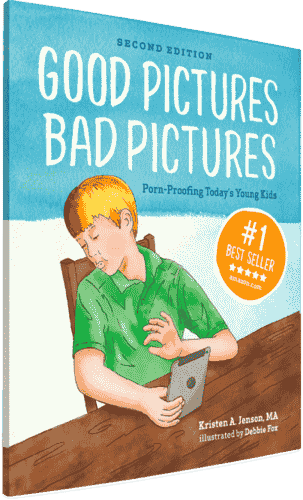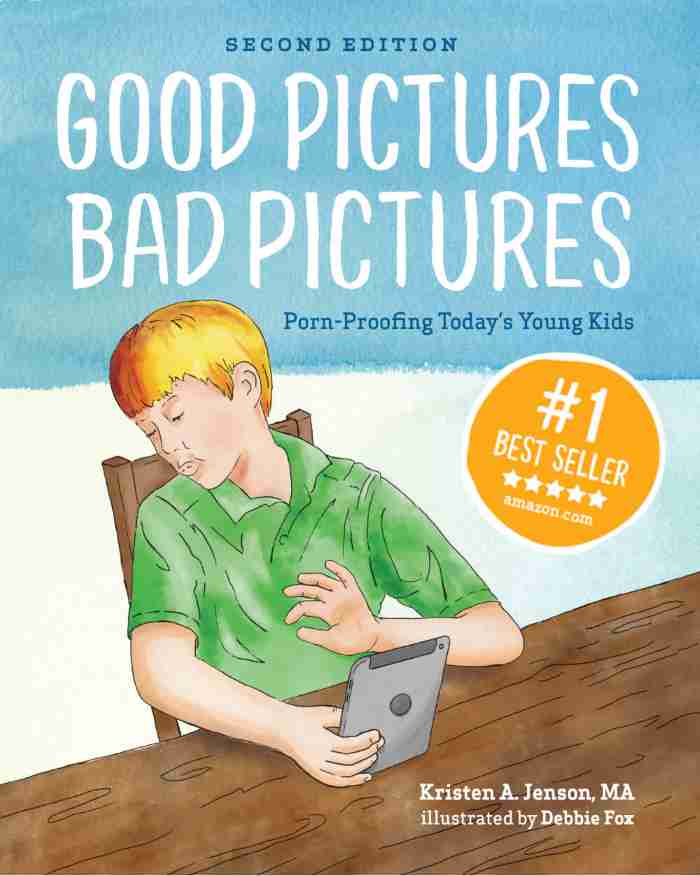

The 8 Best Questions to Ask When Your Child Has Seen Porn
It’s one of many parent’s worst fears: in spite of your best efforts and strongest precautions, your child has been exposed to porn. And given the range of devices available, the pathways of exposure are almost too numerous to list.
.jpg)
One mom learned that her 11-year-old son was tricked into viewing hardcore porn by a slightly older neighbor friend. The neighbor boy shared what he said was a music video on his iPod as a “joke”, thinking it would be funny to see her son’s reaction. Thankfully, the younger boy knew enough to tell his mom what had happened, even though he was embarrassed, shocked, and confused by what he had seen.
Unfortunately, this is the digital challenge that many parents are facing today. Even if kids are not actively looking for pornography, it is possible to be exposed while doing online research for an assignment at school, playing a game, or visiting at a friend’s home.
The rollercoaster of emotions that follow a child’s unwilling exposure to porn are hard for any parent to process: Shock, blame, anger, and disbelief - these are all valid feelings, and parents can find some emotional release by reaching out to a good friend. It’s better to vent to another adult rather than your kid!
You’re not alone if your child has seen porn
What can you do when your child has seen pornography unwillingly or accidentally?
The first step is to take a deep breath and know that you are not alone. Since most kids see pornography sometime before they are 18, your child is having a very common - although disturbing - experience. In fact, 22% of online porn viewing among kids under 18 is done by children under the age of 10. Remember, if you learn that your child has seen pornography, it is much better to know about it than to not be aware, because now you can help!
Build trust
It’s natural to feel upset and even angry about your child’s exposure to pornography, but of course you don’t want to take it out on your child! Guilt-laden or angry words may drive your child into shame and isolation (two factors that promote addictions) and away from the connection that he or she really needs right now.
Remember that your child is likely already feeling shame and guilt at having seen sexually explicit videos or images. Let your child know that you want to help him or her stay safe and happy now and in the future.
Assure them that your love doesn’t change. By problem-solving together, he or she will be more open to discussing what happened.
8 Questions to help your child talk and feel better
Naturally, you will want to find out as much as you can to help you understand how your child is processing the unwanted images. Practice active listening as you ask your child about their experience. You might want to take your child out for a drive or to a park where you can have some shared time in a more neutral environment.
When you keep your tone natural and conversational your child will be more comfortable sharing their feelings with you.
[[CTA]]
Here are some ideas of questions to help your child talk about the experience.
1. Can you tell me what you saw?
This takes some sensitivity! Kids may not even have words to explain it. They may also be afraid to say things they think their parents don’t know about - what child wants to educate their parent on pornography? Some kids may not be quite ready to share it, so be patient without pushing, and let them know you will check in with them later.
2. Did you understand what you were seeing in the video or pictures?
This is an important step in the conversation, because you are getting a “temperature check” on his or her understanding of human sexuality - both healthy and unhealthy expressions of it. Make a plan to follow up with age-appropriate books on sex that are positive and healthy. This will be an ongoing conversation, so you don’t need to cover everything at one time!
3. How did you feel inside?
Being able to express their emotions is important. Some younger children may use words like “yucky”, “sick”, or “scared” to describe emotions. It is also normal to be curious and want to see more at the same time!
4. How did your body feel?
Emphasize that there isn’t a “right” or “wrong” answer here. Whatever your son or daughter felt was normal, even if the porn is certainly not! It is natural to feel physical attraction - that means their body is working the way it should.
5. Are the images coming back to your mind?
Our brain is specifically designed to remember things, especially when they pack the wallop of pornography. Reassure a child there is nothing wrong with them, they are not bad and they are not in trouble. They can take charge of their thinking brain! Let them know they can talk to you any time these thoughts come back. Talking to a safe person really does help us feel better.
Related: Ultimate Parent Hack: Teach Kids to Use Their “Thinking Brain”
6. What activities could you do to help you feel better?
Getting busy with something enjoyable is a powerful way to release the disturbing feelings and images. What does your child like to do? Help them plan an activity and get going right away!
7. What can we learn from this to help you avoid this happening again?
One of the most effective strategies to prepare your child for any situation is through role play. This involves practicing assertive communication skills, setting boundaries, and taking turns being on different sides of a situation. Effective role playing will help your child to speak out or walk away from unwanted situations.
In some cases, you may learn that your teen has been seeking out porn for some time and could use some help to stop. Check out our friends at Fortify - they have an online program that is helping many young people learn some skills for change and get support.
8. Do you have any questions for me?
Give them some space to share what is spinning around in their thoughts. Your child may even be curious about your own experiences with porn. In an age-appropriate way, you can share what you learned about the importance of boundaries and talking to a trusted adult. Or, your child may not say much at all. In that case, reassure your child that you will continue to be there for her and that you will check in with her again to see how she is doing.
Educate your child on the problems with porn
Children lack life experience and enough maturity to cope with the intense sexual feelings that are awakened when viewing porn. The paradox of being both repelled by and attracted to it creates a confusing experience. Help children understand the power of their thinking brain (knowing right from wrong) versus their feeling brain (which responds quickly to stimuli). Using the two-brain analogy can help your child stay in charge and reject the lure of pornography.
And while it’s important to provide your children with factual information regarding porn, remember to share your family’s goals, attitudes and values regarding sexual intimacy in age-appropriate ways Educating your child about healthy sexuality compared with the fake and destructive ways it is shown in pornography will help to prepare your child for future encounters with porn.
Related: You Have Two Brains!
Make a plan together
Empower your child to make confident, deliberate choices to resist temptation or peer pressure to join in undesirable activities. Brainstorm together some actions to take as a family.
For example, some families have a house rule of putting all the family’s tech devices in a basket before bedtime or before dinner. Creating deliberate “digital free” times to connect as a family will build memories and relationships. It also models that we are in charge of our digital consumption, rather than jumping nonstop to check social media, texts, and other messages.
Have an overall plan for how your family will use media in line with your values and goals. One simple and effective tool that all families can use is the CAN DO plan in our read-along picture book, Good Pictures Bad Pictures: Porn-Proofing Today's Young Kids. Learning the CAN DO steps will help your child become resilient and in charge of what he allows to enter and dominate his thoughts.
Related: 3 Secrets to Raising Kids Who Persevere!
Continue to learn about the changing digital world
Keep learning how technologies are changing and how they may affect your child’s development. Did you know that one in ten children age 8 or under live in households with one or more these new technologies: a virtual reality headset; smart toys connected to the Internet; or voice-activated virtual assistants such as Amazon Echo or Google Home. These devices present new ways to get things done or have fun, but also potentially new avenues for pornography to reach children.
Your Five-Step Action Plan
1) Build trust by responding calmly.
2) Ask questions to help your child talk and feel better.
3) Educate your child on the problems of porn.
4) Make a plan together for how to prepare for future encounters.
5) Continue to learn about the changing digital world and how it affects your child.
Whatever challenges your child may face in the digital age, there is hope! You are your child’s best advocate and coach. By using some of these strategies, you can help your child use his experiences to become more prepared, resilient and assertive. Please share this post to help other parents know how to support their children. The more prepared we are, the better the outcome for kids!



Good Pictures Bad Pictures
"I really like the no-shame approach the author takes. It's so much more than just 'don't watch or look at porn.' It gave my children a real understanding about the brain and its natural response to pornography, how it can affect you if you look at it, and how to be prepared when you do come across it (since, let's face it... it's gonna happen at some point)." -Amazon Review by D.O.








